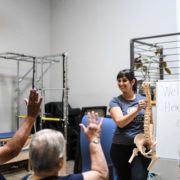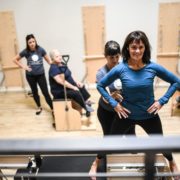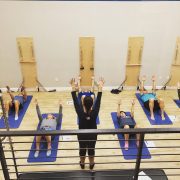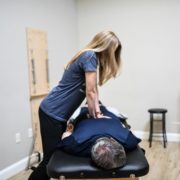The Location of Your Pain may NOT be its Source…
One of the most confusing topics we deal with in our practice is pain. And there’s lots of advice out there on what to do about it…
Should you rest or move? Apply heat or ice? See a doctor or let it go away on its own?
Before you can even think about a solution to your pain, you must first accurately determine where it’s coming from. If you have pain in your knee, but it’s actually coming from your back, the best knee treatment in the world is not going to fix it.
Inaccurate diagnosis of pain is a BIG reason why so many people suffer longer than they need to, and undergo unnecessary surgeries.
You must accurately determine the source of your pain for treatment to be effective, and the location of your pain alone is not a reliable way to do that.
For example, I’ve seen people in my office with what they think is unrelenting tennis elbow, only to find out it was actually a problem in their neck causing it. I’ve seen people disappointed after a failed knee surgery, because the problem was never in their knee and actually coming from their back.
Isolated extremity pain (knees, elbows, shoulders) is one of the most misdiagnosed problems we see in our office.
A recent study by Richard Rosedale, et al. in the Journal of Manipulative Therapy investigated this – and it was found that over 40% of people suffering from isolated extremity pain actually had a spinal source of symptoms.
In other words, their extremity pain was actually coming from their neck or back.
I can’t tell you how many times we’ve seen folks with unexplained shoulder pain lasting months or years get better as soon as we begin treating their neck, even though they never had neck pain.
Same for knees…
It’s possible to have knee pain that is caused by your back, without ever hurting your back!
Confused? I don’t blame you.
But more importantly, how do you figure out the source of your pain when it’s not always where you’re feeling it?
As already mentioned, the most common place for this to happen is with extremities. If you’ve got shoulder, elbow, knee or foot pain – and you don’t ever recall a specific injury to it – you MUST consider that it could be coming from your spine.
There’s a 44% chance that it is!
Where this gets really confusing is that typically your doctor will order an MRI when you’ve got isolated knee or shoulder pain that won’t go away. And if you’re over 40 years old, the MRI will almost always show “something” – a torn rotator cuff, torn meniscus, arthritis, or wear and tear.
Remember that these are normal signs of aging in everyone, and may not be the cause of your pain.
If you haven’t already had your spine checked properly as a possible source, you can’t rely on these findings (or the location of your pain) as an accurate diagnosis. That is how people end up having surgeries they don’t really need.
Whenever someone comes into our office with isolated extremity pain, we don’t even look at it without an exam of their neck and back first.
By moving your spine repeatedly, and in certain directions, we can often produce – or take away – the pain you’re feeling in your knee or shoulder.
Why?
Because if the pain in your extremity is caused by a pinched or aggravated nerve, moving your spine around is going to influence that, and tell us where the source really is.
An MRI and X-ray won’t be able to determine this for you with certainty – because sometimes your nerve only gets irritated when you move a certain way – or when you’re in a certain position. Since MRI’s and X-rays can’t see what’s going on while you’re moving, you can’t rely on those tests alone to tell you exactly where your pain is coming from.
If you’ve had pain in one of your extremities for a while now, and it’s not going away, it’s possible you’ve missed the source.
That source could be your spine.
And if you’re considering some kind of surgery or procedure, you definitely want to rule that out first.
Specialized movement exams like we do in our office are one of the most reliable ways to figure this out. If you’ve had unexplained pain in your knee or shoulder that isn’t going away, CLICK HERE to request a Free Discovery Session with one of our specialists.











